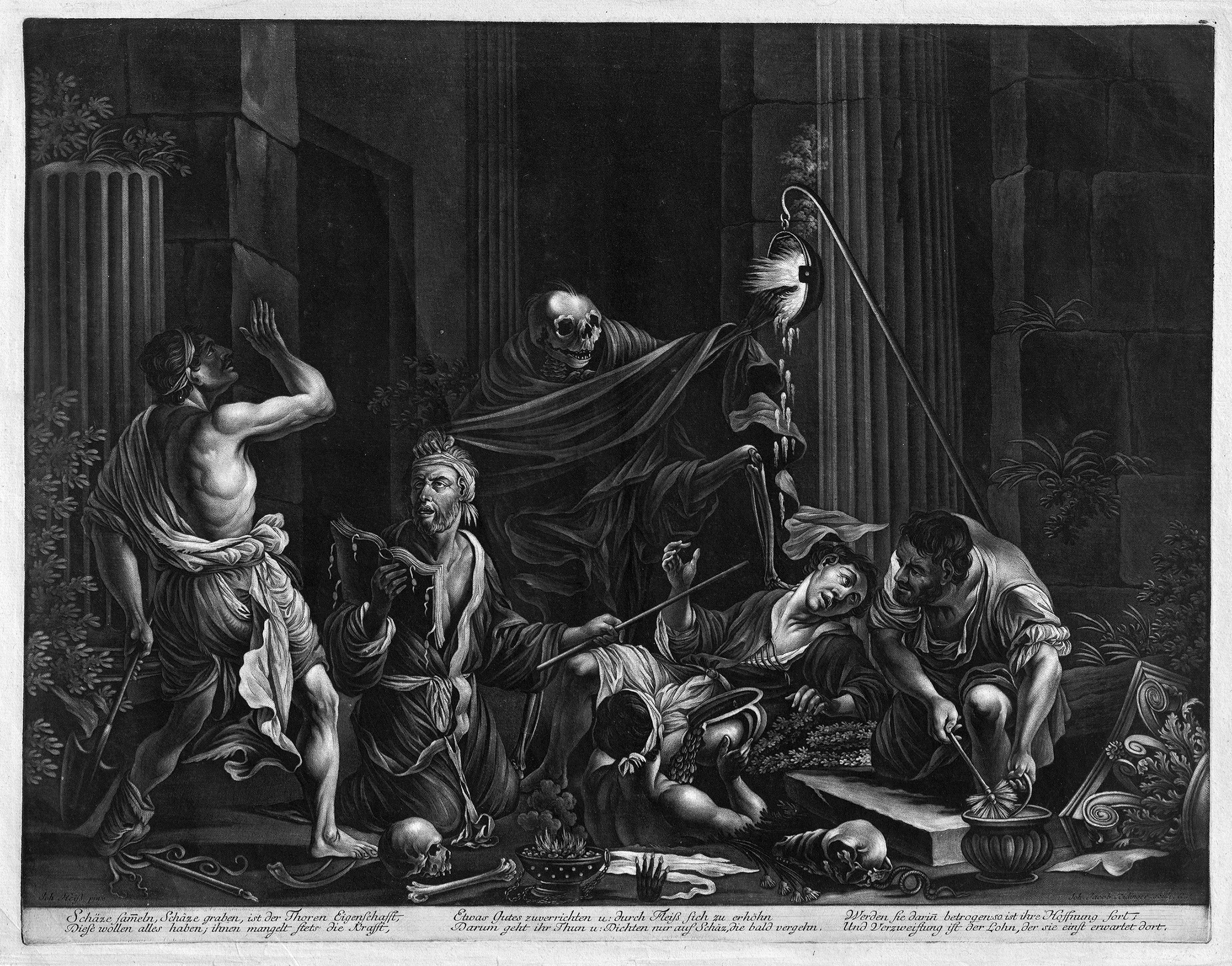Loading the page ...
Johann Jakob Ridinger
(circa 1736–1784, Augsburg)
Treasure Hunters Surprised by Death. Mezzotint after Johann Heiss. 41.8 x 53.8 cm. Le Blanc 6; not in Nagler. Watermark: Letters.
This idiosyncratic memento mori print by the Augsburg artist, Johann Jakob Ridinger, depicts a group of treasure hunters against a backdrop of architectural ruins in a very evocative and eerie night-time scene. In the foreground, slightly left of centre, a necromancer is reciting incantations from a book with six seals when, all of a sudden, death enters the scene from the darkness. As it does so, it brushes against a lamp, spilling hot oil which threatens to burn the neck and shoulder of one of the treasure hunters.
The work is based on the painting Treasure Hunters made in 1696 by the Augsburg painter, Johann Heiss, which is now in the Colloredo Mels Collection in St. Maria da Lunga in Friuli (Königsfeld B46, fig. 69); Ridinger has made slight alterations to the composition of the painting. Another version, in which death is replaced by a satyr, is in the Zeppelin Museum in Friedrichshafen (Königsfeld B15, fig. 44). Ridinger makes consummate use of the mezzotint technique in reproducing the chiaroscuro values of the painting and, in doing so, further heightens the dramatic nature of the scene. Peter Königsfeld,
the author of a monograph on Johann Heiss, has incorrectly described the present print as an engraving, stating that its “whereabouts are unknown” (Königsfeld p. 344, no. 127).
Around 1760 Johann Elias Ridinger, Johann Jakob’s father, also temporarily addressed the memento mori theme in his works. Almost all the designs Johann Jakob Ridinger made at this time were executed in black manner. As is evident from the present example, however, Johann Elias was not the only source of inspiration for his son’s memento mori prints. Nonetheless, the work is fully in keeping with his father’s compositions in that it has a moralising caption urging its readers not to be blinded by the vain splendour of worldly goods but to lead an honest and hard-working life.
A brilliant, velvety, rich impression of unsurpassed beauty with thread margins. Minor defects, otherwise in excellent condition. Extremely rare. Literature: Peter Königfeld, Der Maler Johann Heiss: Memmingen und Augsburg 1640–1704, Weißenhorn 2001.
